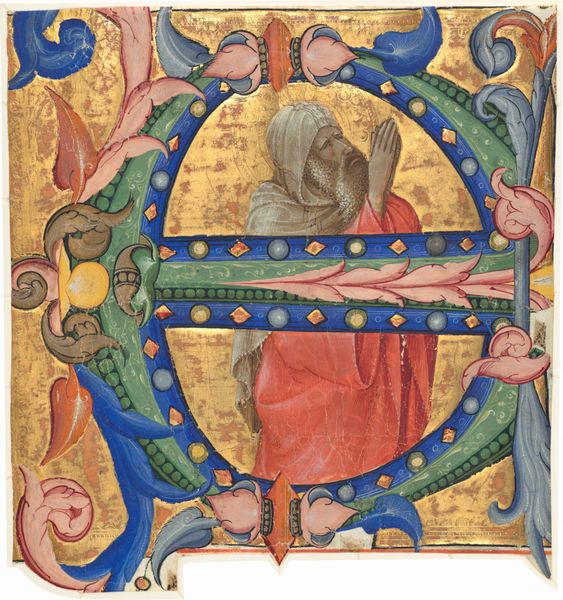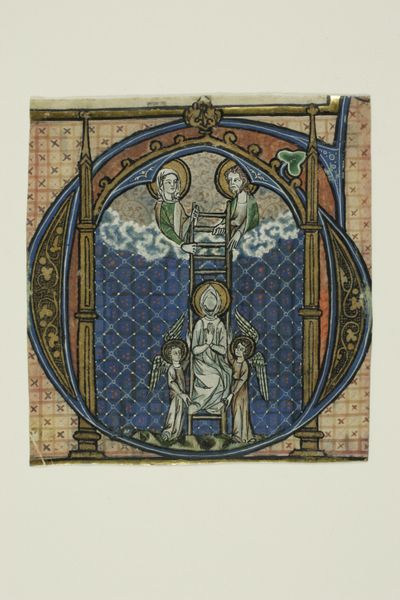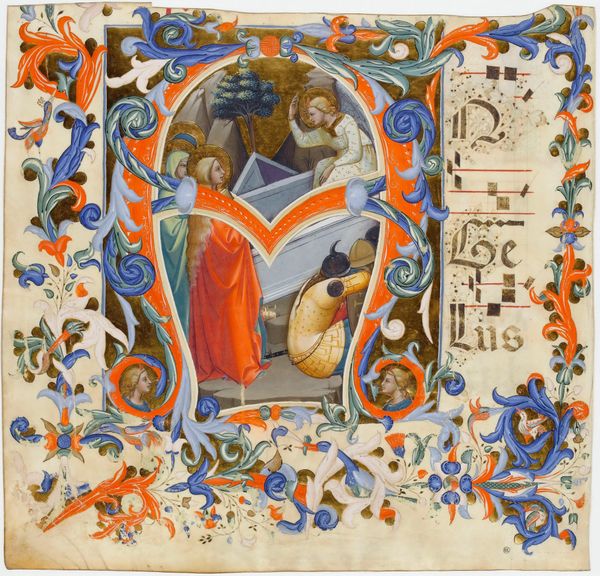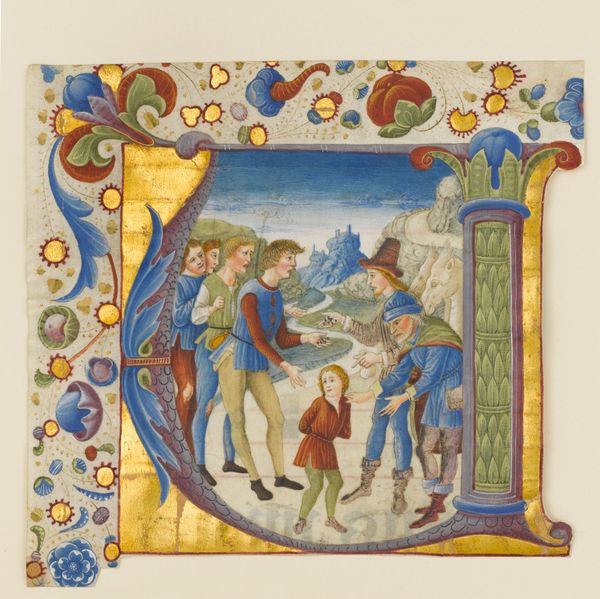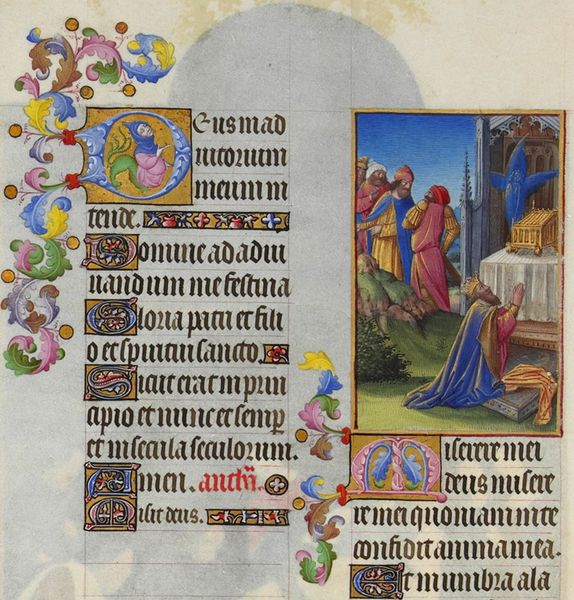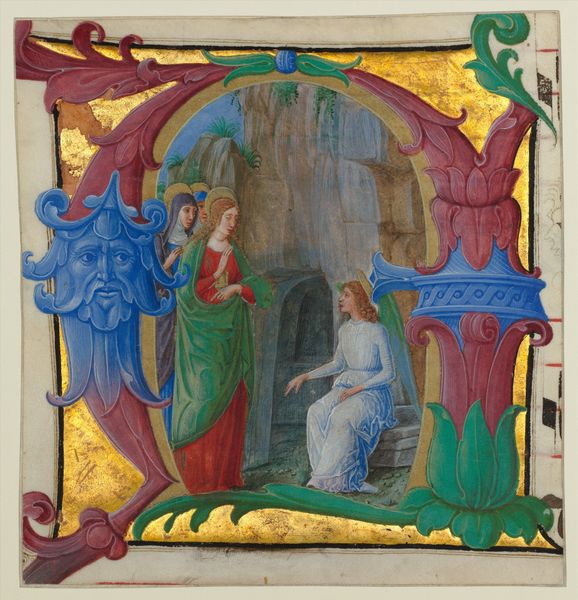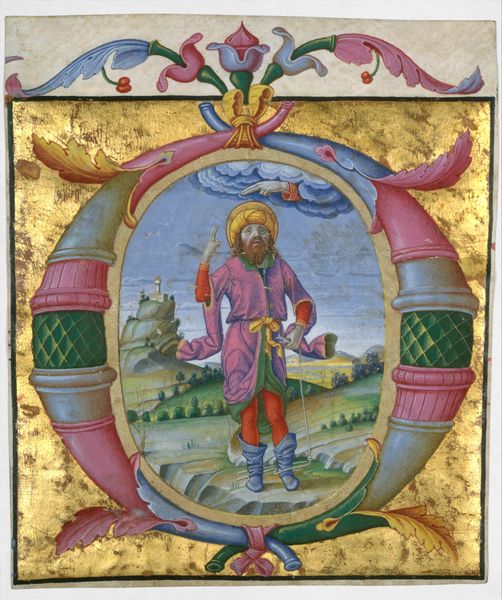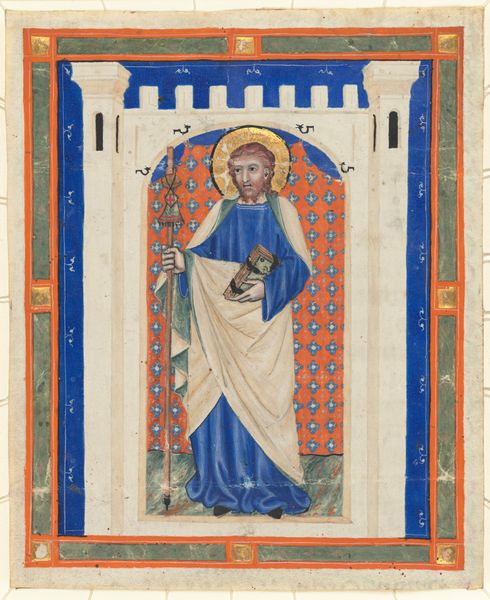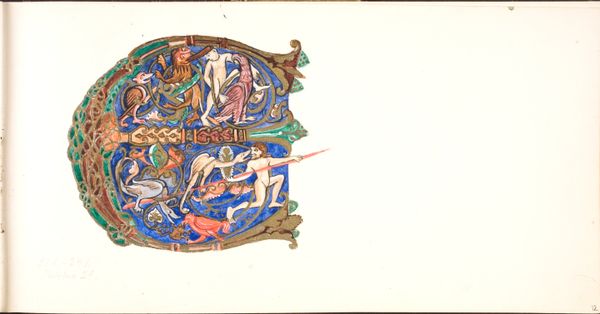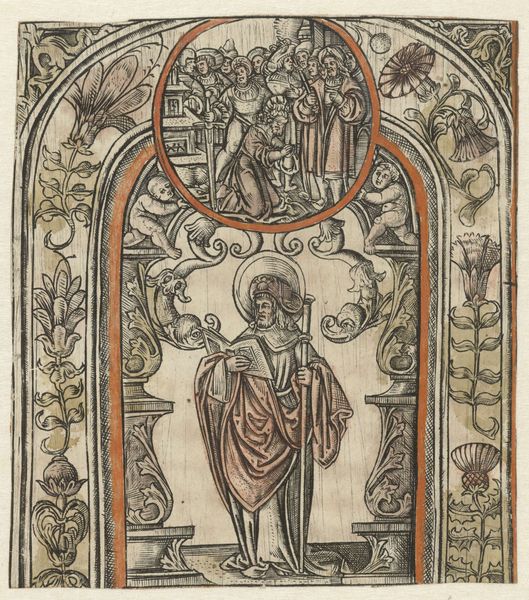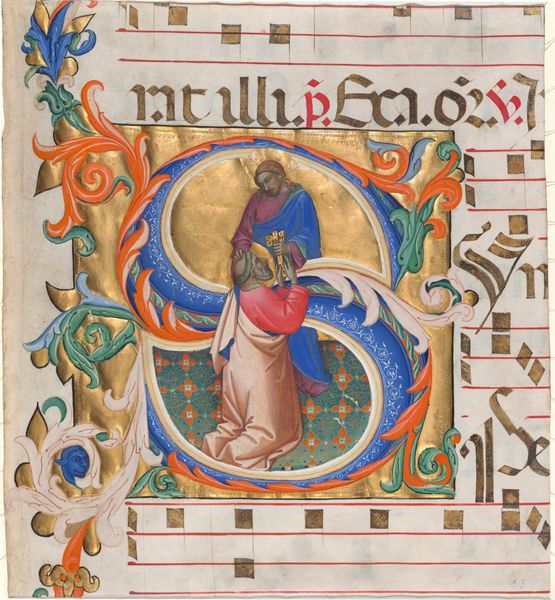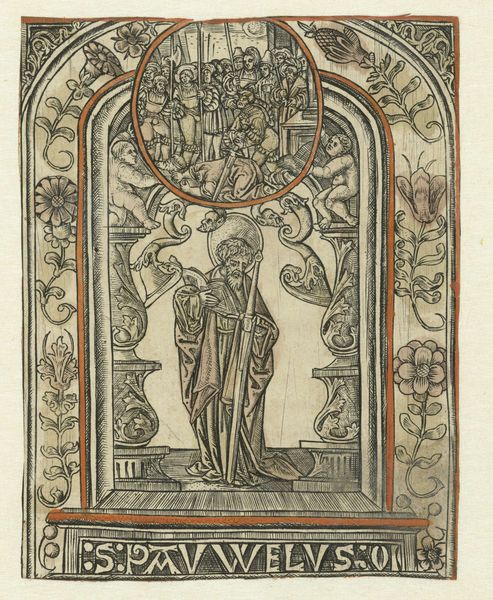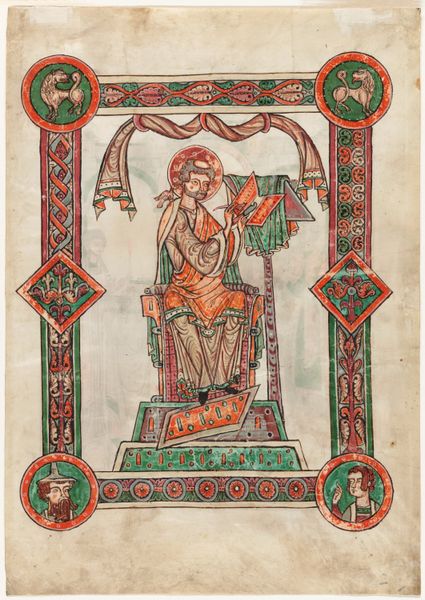
tempera, painting
#
medieval
#
narrative-art
#
tempera
#
painting
#
figuration
#
oil painting
#
painting art
#
history-painting
#
italian-renaissance
#
miniature
#
watercolor
Dimensions: 5 5/8 x 5 3/8 in. (14.2 x 13.5cm) Initial Ground: 4 13/16 x 4 13/16 in.
Copyright: Public Domain
Curator: Look at this intriguing miniature by Zanobi Strozzi, "King David in Prayer in an Initial B," created between 1447 and 1453. It's currently housed at the Metropolitan Museum of Art. Editor: My immediate reaction is a feeling of enclosed serenity, of intimate spirituality made tangible. The 'B' feels less like a letter and more like a protective space. Curator: Absolutely. Strozzi crafted this using tempera, and it originally formed part of an illuminated manuscript. Imagine the context: a devotional book, made painstakingly by hand, destined for the elite. The image reinforces the idea of divinely sanctioned rule. Editor: Thinking about the production, the layering of egg tempera to achieve those subtle gradations of color must have demanded incredible precision. The use of gold leaf, too. It all screams luxury and bespoke craftsmanship intended for aristocratic consumption. I wonder about the workshop conditions, the labor divisions... Curator: Manuscript illumination workshops of the Italian Renaissance certainly fostered specialized skills and often operated under a master's guidance. These artworks underscored power; ownership equated to status and sophistication. The illuminated "B" wasn't merely decorative; it functioned as a visual cue and affirmed the patron’s standing. Editor: The deep blue dominates the scene, doesn't it? What's compelling is how the angel seems almost integrated *into* the initial itself. Note how the material act of painting has transformed language into imagery, subtly supporting hierarchies of faith. Curator: That shade of blue, likely derived from lapis lazuli, reinforces a celestial theme and conveys sacredness. King David's praying gesture emphasizes humility while subtly referencing his royal lineage sanctioned by divine favor. This miniature served as an instrument, solidifying a worldview that shaped society's understanding. Editor: Looking closer, the fineness of the lines used to delineate details – the expression on David's face, the delicate folds of his robes – demonstrate immense control. The transition of script into form reflects art’s unique ability to bridge manual labor with a sophisticated concept. Curator: And understanding the historical context lets us view beyond the aesthetics. These aren't merely illustrations, but calculated assertions of power during an epoch profoundly defined by its socio-political conditions. Editor: Precisely. When considering the materials and means, we’re left not only admiring skill but acknowledging how labor translates into a system for legitimizing certain stories through symbolic representation. Curator: Indeed, a seemingly small miniature encapsulates considerable historical and political significance. Editor: The intersection of faith, material wealth, and labor history continues to intrigue and demand revisiting for many centuries.
Comments
No comments
Be the first to comment and join the conversation on the ultimate creative platform.
